A newly found object nearly four times farther out from the Sun than Pluto now holds the record for the farthest observed in our solar system. Plus, forming super-Earths, finding potentially habitable planets, jellyfish galaxies, the Crab Nebula, and this week’s What’s Up.
Media
Transcript
Hello and welcome to the Daily Space. I am your host Dr. Pamela Gay.
And I am your host Beth Johnson.
And we are here to put science in your brain.
Our first story today is far out. Correction. It’s actually ‘Farfarout’, which is the unofficial name for a solar system object recently discovered by a team using the Subaru 8-meter telescope at Maunakea in Hawai’i. Follow up observations were performed with the Gemini North and Magellan telescopes to determine the orbit of this newly found world, and it is truly far, far out there. In fact, it’s so far, far out there that it now holds the record for the most distant object observed in our solar system, edging out the previous record-holder, Farout.
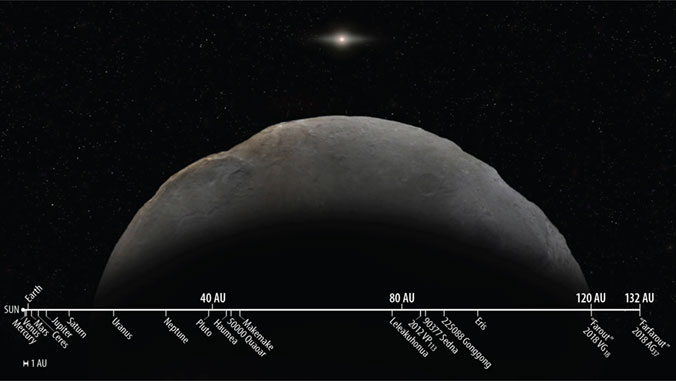
Astronomers cannot be trusted to name things. And yet, these names amuse us.
So just how far, far out there is this world? It is currently out at 132 AU from the Sun, almost four times farther out than Pluto at the moment, in an elongated orbit that is currently calculated to be between 175 AU at its most distant and 27 AU at its closest. This perihelion distance puts the orbit inside that of Neptune, so we can technically call Farfarout a Trans-Neptunian Object. Team member David Tholen notes: A single orbit of Farfarout around the Sun takes a millennium. Because of this long orbital period, it moves very slowly across the sky, requiring several years of observations to precisely determine its trajectory.
Neptune turns out to have a huge influence on Farfarout, which is only about 400 kilometers across, making it small even for a dwarf planet. That thousand-year orbit constantly brings Farfarout close to Neptune, whose gravitational influence is substantial. This means that we cannot use Farfarout to help in the search for Planet X. That mysterious and as-yet-undiscovered planet can only be found using bodies that don’t gravitationally interact with any other large bodies (other than the Sun, of course), including Sedna and 2012 VP113. They may be closer in, but their orbits don’t come near Neptune, so any outer influence will come from Planet X. We think.
What’s also interesting here is that team member Chad Trujillo notes: Farfarout’s orbital dynamics can help us understand how Neptune formed and evolved, as Farfarout was likely thrown into the outer solar system by getting too close to Neptune in the distant past. Farfarout will likely interact with Neptune again since their orbits continue to intersect.
These discoveries of distant solar system objects can only happen because our telescope technology has advanced to make it possible, with larger digital cameras on huge telescopes. This team is actively using this equipment to conduct a survey for more of these objects. They discovered that previous record holder, Farout, back in 2018. With the construction of even bigger observatories, we hope to get a complete picture of our solar system, and we’ll keep bringing you new discoveries as they are announced.
Speaking of solar system discoveries, Mars is the big thing in the news this week, and the European Space Agency announced the discovery of hydrogen chloride gas in the atmosphere. The detection was made using the ESA-Roscosmos ExoMars Trace Gas Orbiter and could provide insight into surface-atmosphere interactions.
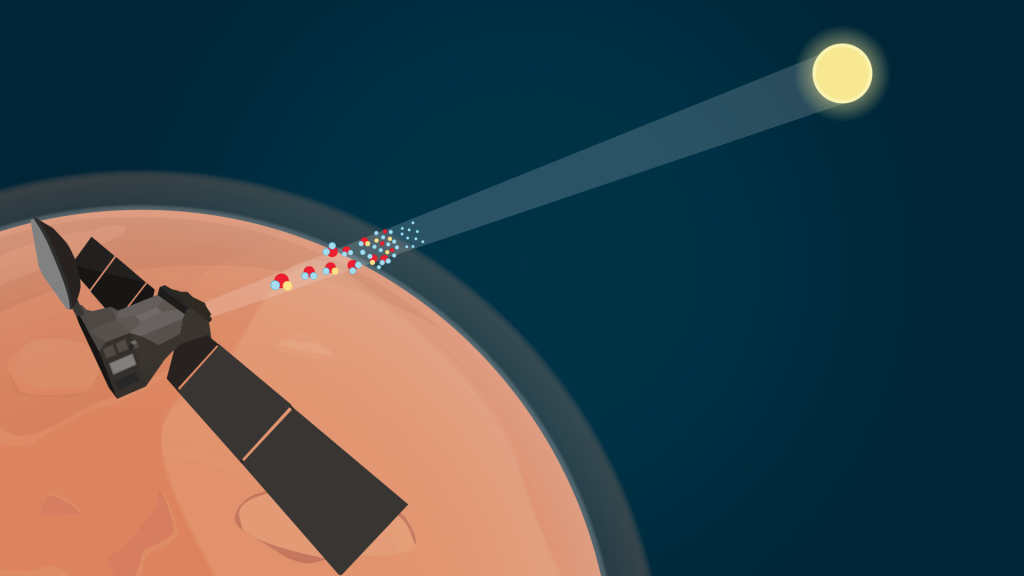
This discovery remains a bit of a mystery, though. Per the press release: Mars scientists were always on the look-out for chlorine- or sulfur-based gases because they are possible indicators of volcanic activity. But the nature of the hydrogen chloride observations – the fact that it was detected in very distant locations at the same time, and the lack of other gases that would be expected from volcanic activity – points to a different source.
Here’s one explanation for that different source. The wind lifts dust that contains chloride salts, like NaCl, into the atmosphere. Solar heating warms the surface, causing water vapor to rise from some of that subsurface water ice we keep talking about. Then the salt interacts with the water to release the chlorine, which then reacts with either the hydrogen in the water or free hydrogen gas in the atmosphere to form hydrogen chloride.
Or there could be active volcanoes we just haven’t seen. Either way, we need more data, as always. The results of this research can be found in Science Advances.
Remember how we told you a few months back that super-Earths were possibly the rocky cores of mini-Neptunes that lost their outer gas covering? Well, that hypothesis is being challenged in a new paper in The Astrophysical Journal, where researchers used a simulation and thermodynamic calculations to understand the evolution of this family of planets.
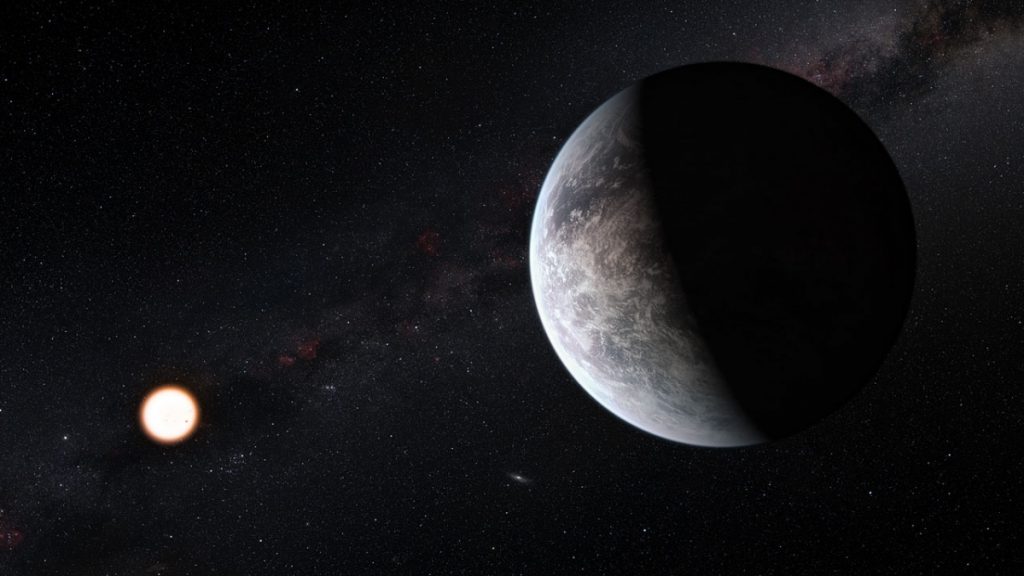
The results of these calculations suggest that super-Earths are not the remnants of mini-Neptunes, at least, not all of them. Co-author Eve Lee explains: Contrary to previous theories, our study shows that some exoplanets can never build gaseous atmospheres, to begin with. Some of the rocks grew gas shells, while others emerged and remained rocky super-Earths.
Basically, the distinction between these smaller super-Earths and larger mini-Neptunes is that one had the ability to grow and retain a gas shell. Pretty obvious, yes, but different from the other hypothesis. We’re sure someone will change it next month. And since Beth wrote this, she’d like me to add it to the ever-growing list of evidence that we really don’t understand planetary formation or solar system evolution.
Gah. Planetary formation. I’m kind of over it. Let’s go back to talking about finding interesting exoplanets.

Our next story seems to have the science world abuzz today. A new paper was published in Nature Communications that examines the progress made in observational methods that allow us to hunt for potentially habitable planets. The first system they looked at with this new method was Alpha Centauri, which is the closest star system to our own at only 4.3 light-years away.
And they possibly have found a planet in the habitable zone.
Alpha Centauri is a triple star system with two stars, A and B, orbiting each other as a binary system. They are about the size and age of our own Sun. A third star, commonly known as Proxima Centauri, orbits the binary pair but much farther out. These new observations focused on the inner binary, and here’s how the method works, as explained by the press release:
By moving one star on the coronagraph and one star off the coronagraph every tenth of a second, this technique has allowed researchers to observe each star for half the time, and more importantly it has allowed them to subtract one image from the next, which removes all but the noise of the camera and telescope. After removing the known artefacts created by the instrumentation and the residual light from the coronagraph, the final image revealed a light source designated as “C1”, a plausible detection, which could be a planet the size of Neptune to Saturn, located at a distance from Alpha Centauri A similar to that between the Earth and the Sun.
Whew. So. There’s a possible planet in the habitable zone of Alpha Centauri, and we can directly image it. Possibly. Maybe. The team plans to do a second observing campaign and use other methods like radial velocity measurements to confirm this discovery. We’ll update you here on the Daily Space when that happens.
All this talk about habitable zones brings us back to the inescapable fact that what we are really looking for, at the heart of all these searches, is life on other planets. And one way I have been saying to look for that life is to search for signs of a civilization’s atmospheric pollution. Now, NASA has released a study to be published in The Astrophysical Journal that agrees with me.
As lead author Ravi Kopparapu explains: On Earth, most of the nitrogen dioxide (NO2) is emitted from human activity — combustion processes such as vehicle emissions and fossil-fueled power plants. In the lower atmosphere (about 10 to 15 kilometers or around 6.2 to 9.3 miles), NO2 from human activities dominate compared to non-human sources. Therefore, observing NO2 on a habitable planet could potentially indicate the presence of an industrialized civilization.

This is the first time a study has looked at nitrogen dioxide as a possible technosignature for extraterrestrial life. The team used computer modeling to determine if this particular form of pollution could produce a detectable signal. Well, at least a signal detectable using those advanced telescopes we talked about earlier. It’s what we have to work with at the moment or will have in the near future.
Per the press release: They found that for an Earth-like planet orbiting a Sun-like star, a civilization producing the same amount of NO2 as ours could be detected up to about 30 light-years away with about 400 hours of observing time using a future large NASA telescope observing at visible wavelengths. This is a substantial but not unprecedented amount of time, as NASA’s Hubble Space Telescope took a similar amount of time for the famous Deep Field observations.
Additionally, stars that are cooler and more common than our Sun, what we call K and M-type stars, or red dwarfs, will actually produce a more easily detected nitrogen dioxide signal. Since those stars are more abundant, we have more chances for finding technosignatures from planets in orbit around them.
I have to note, though, that as exciting as this study is for me, nitrogen dioxide is also produced naturally. So this isn’t the substantial result we hoped for, but it’s a step in the right direction. Now we’ll just have to figure out how to distinguish naturally occurring amounts from technologically produced amounts and double-check any positive signals we find. If we find them. I really hope we find them.
I’m not going to lie, we decided to cover this next science paper because the science is just plain pretty.
It’s long been known that as galaxies get gravitationally pulled into clusters, a lot of dramatic things happen. Galaxy clusters don’t just have a lot of galaxies, but they also have a lot of intragalactic gas. When galaxies hit this gas, the galaxies get shocked into forming stars, get distorted, and even get stripped of material. In one of the few examples of good naming in astronomy, this process is called Ram Pressure Stripping.
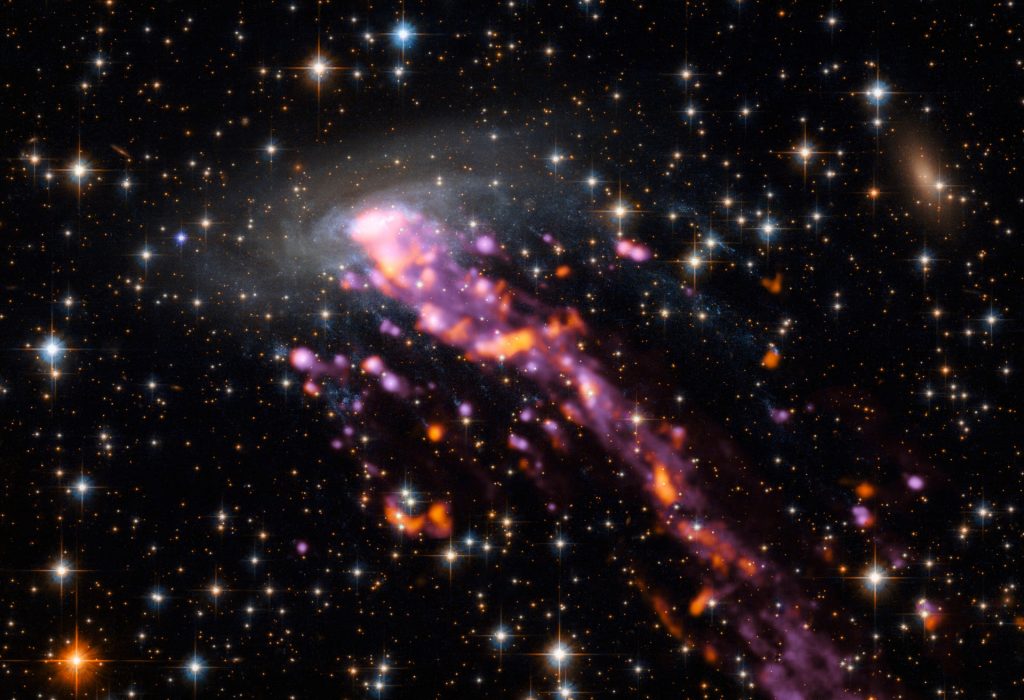
In a new paper published in The Astrophysical Journal, a team led by William Cramer looked at one particularly sticking example of this process: Galaxy D100 in the Coma cluster. As this galaxy has fallen into the cluster, dust and gas were systematically stripped from the galaxy, working from the outside of the galaxy, and that stripped out material was left trailing behind the galaxy like a tail. This kind of galaxy, with trailing material, is called a jellyfish galaxy.
Using data from the Hubble Space Telescope and the 8.2-meter Subaru Telescope in Hawaii, this team used D100 to explore how the material is stripped from galaxies and added into the intracluster medium. They found that as the material moved from the galaxy into the tail, it underwent star formation, with stars forming large clumps, 1,000 to 100,000 solar masses in size. These clumps spread out over time as the stars drift apart.
As D100 continues to fall into the cluster, the material continues to get stripped out, and stars continue to form in this removed mass, building a tail that has recent star formation closer to the main galaxy. Today’s observations show the galaxy is stripped of dust down to a radius of just 500 parsecs but still has a residual spiral structure that holds a record of when dust was removed in the ages of the stars. The paper indicates that a well-defined spiral galaxy like ours or Andromeda can be transformed into a featureless disk — an S0 galaxy — in just one billion years.
This galaxy is undergoing beautiful destruction. When this is over, it will be smashed into a boring blob of stars, with little or no dust and gas remaining. For now, though, this combination of jellyfish arms and remaining galaxy structures allows us to read this system’s history in the stars.
Getting at the detailed structures of distant objects is one of the reasons astronomers are constantly building larger or more sensitive telescopes and instruments. Just like you may not be able to figure out if it is a friend walking down the sidewalk across a particularly wide street, but you know that it is a human walking, astronomers can often tell they are looking at a type of object — a spiral galaxy or a supernova remnant, for example — while they struggle to make out the specific details of the system.
One of the more annoying systems astronomers have been trying to understand is the Crab Nebula or M1. This giant glowing gas structure was created during the explosion of a star in 1054. While there are records of that supernova, observers didn’t exactly have telescopes or cameras in 1054, so modern-day astronomers have to do celestial archeology to try and figure out exactly what kinds of a star blew up.
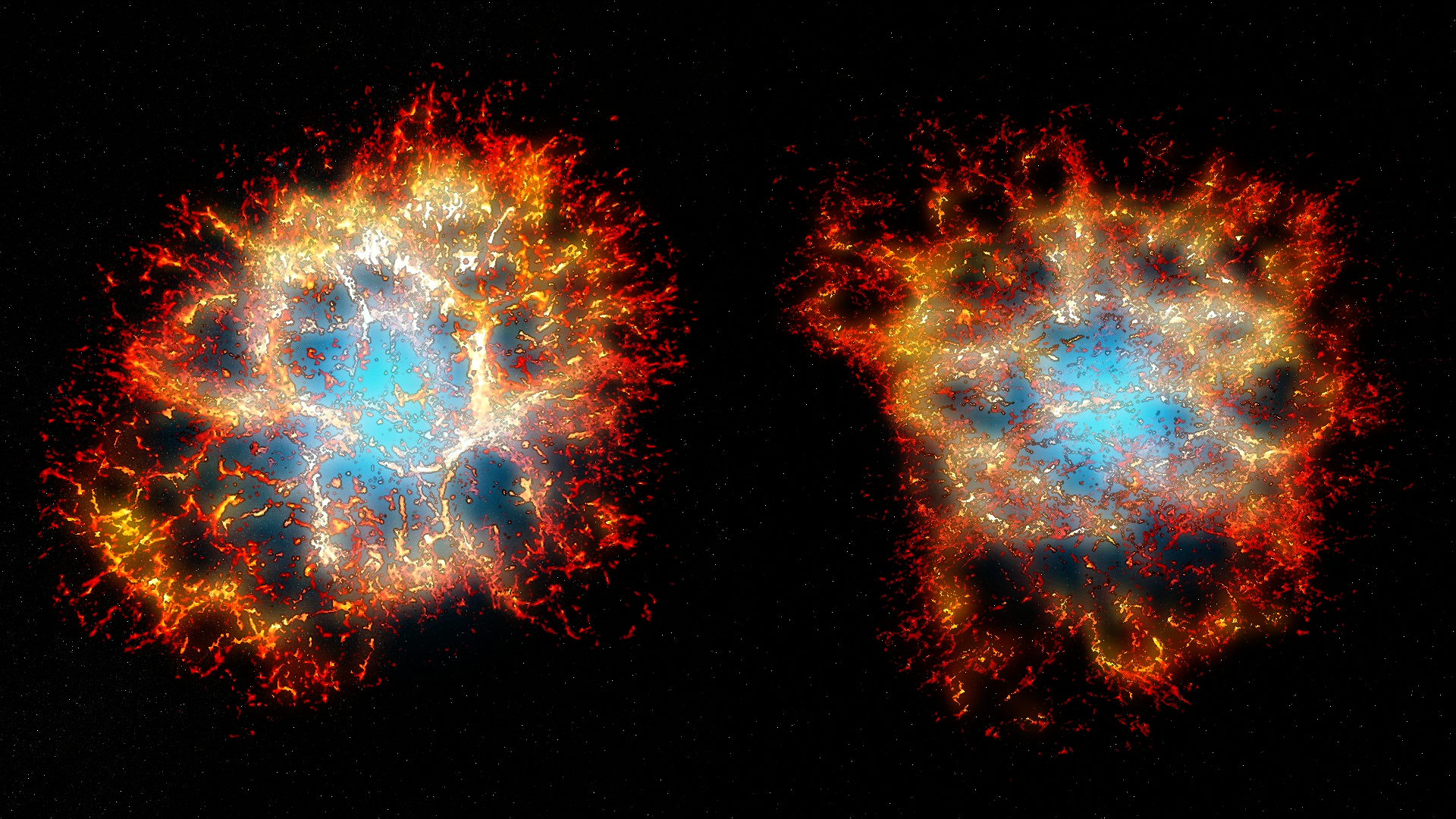
New research using the Canada-France-Hawaii Telescope in Hawaii has been able to create detailed three-dimensional images of the Crab Nebula and two other supernova remnants, and with their new data, they discovered that all three systems had large-scale rings and filamentary structures. According to the paper, appearing in the Monthly Notices of the Royal Astronomical Society with lead author T Martin: The distribution of filaments follows an intricate honeycomb-like arrangement.”
Exactly how this kind of a structure is made is still being figured out; it appears this is a turbulent mixing process that may have been generated by a lower energy explosion of a star with an iron-core. This is different from what less detailed images led folks to believe had formed the Crab Nebula.
While the physics behind this object is still full of question marks, what is most remarkable about these observations is that the 3D map that was created allows scientists to trace out the filaments in the kind of detail that we haven’t seen before. Rather than a flat image that hints at the structure, they have what looks more like a CT scan of the system that allows scientists to scan through layers and trace out how structures tangle together. We’ll have links to the data on our website, DailySpace.org.
What’s Up
In case you hadn’t already picked up on the theme, it is Mars Season, and this means not only are we seeing space mission after space mission reaching the Red Planet, but we’re also seeing Mars high in our skies. To the unaided eye, it appears as one of three bright reddish objects arcing across the sky in the southwest, and if you’ve been watching it these past few weeks, you may have even noticed how its position has slowly changed.
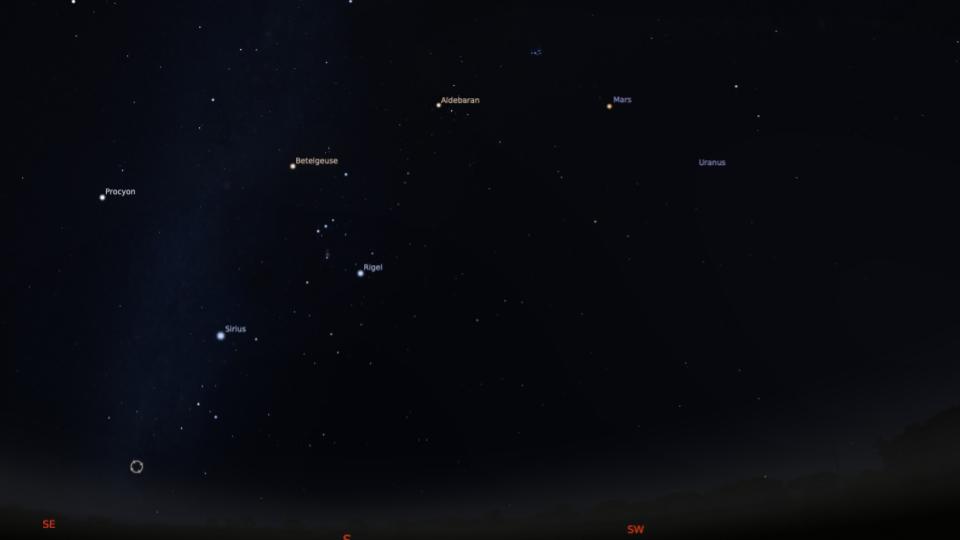
While Mars is impressively bright to the eye, it isn’t impressively detailed when viewed through a telescope. At best you might make out a frozen ice cap and the color variations from hemisphere to hemisphere. Humans, however, are fully capable of imaging details in all that hazy, blurry, mess.
In the late 1800s planetary scientists, like Giovanni Schiaparelli spent significant portions of their life observing Mars. And Antoniadi’s 1894 sketches were taken by science lovers like Percival Lowell as inspiration to both build better telescopes, and in Lowell’s case, to spend hours trying to find canals on Mars. So if you have a moment and clear skies, head outside and look high in the sky, and picture all those rovers and orbiters getting us better images and growing knowledge of this ever-fascinating world.
This has been the Daily Space.
Learn More
Newly Discovered Solar System Object is ‘Farfarout’
- NAU press release
- University of Hawai’i press release
ExoMars Orbiter Discovers Hydrogen Chloride on Mars
- ESA press release
- “Transient HCl in the atmosphere of Mars,” Oleg Korablev et al., 2021 February 10, Science Advances
Super-Earths Are Not Leftovers of Mini-Neptunes
- McGill University press release
- “Primordial Radius Gap and Potentially Broad Core Mass Distributions of Super-Earths and Sub-Neptunes,” Eve J. Lee and Nicholas J. Connors, 2021 February 10, The Astrophysical Journal
New Method Finds Potentially Habitable Planet at Alpha Centauri
- University of Liège press release
- University of Arizona press release
- “Imaging low-mass planets within the habitable zone of α Centauri,” K. Wagner, A. Boehle, and T. de Zeeuw, 2021 February 10, Nature Communications
Pollution Could Be Solution to Detecting Technological Civilizations
- NASA press release
- “Nitrogen Dioxide Pollution as a Signature of Extraterrestrial Technology,” Ravi Kopparapu et al., to be published in The Astrophysical Journal (preprint on arxiv.org)
Jellyfish Galaxies Swimming Through Clusters
- Astrobites article
- “Spectacular Hubble Space Telescope Observations of the Coma Galaxy D100 and Star Formation in Its Ram Pressure–stripped Tail,” W. J. Cramer et al., 2019 January 8, The Astrophysical Journal (preprint on arxiv.org)
Three-Dimensional Mapping of the Crab Nebula
- Royal Astronomical Society press release
- CFHT press release
- “3D mapping of the Crab Nebula with SITELLE – I. Deconvolution and kinematic reconstruction,” T Martin, D Milisavljevic, and L Drissen, 2021 January 18, Monthly Notices of the Royal Astronomical Society
Credits
Written by Pamela Gay and Beth Johnson
Hosted by Pamela Gay and Beth Johnson
Audio and Video Editing by Ally Pelphrey
Content Editing by Beth Johnson
Intro and Outro music by Kevin MacLeod, https://incompetech.com/music/


 We record most shows live, on Twitch. Follow us today to get alerts when we go live.
We record most shows live, on Twitch. Follow us today to get alerts when we go live.